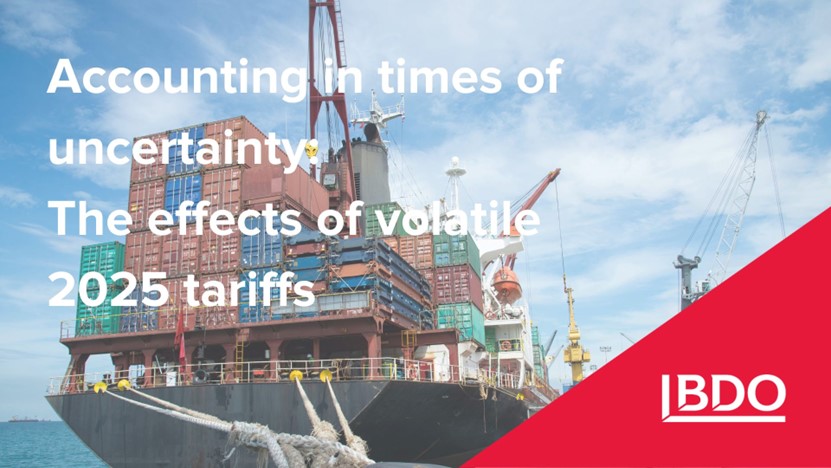ACCOUNTING IN TIMES OF UNCERTAINTY: THE EFFECTS OF VOLATILE 2025 TARIFFS
ACCOUNTING IN TIMES OF UNCERTAINTY: THE EFFECTS OF VOLATILE 2025 TARIFFS
.jpg?lang=en-GB)
ACCOUNTING IN TIMES OF UNCERTAINTY: THE EFFECTS OF VOLATILE 2025 TARIFFS
Throughout 2025, various governments have stated an intention to increase tariff rates on a wide variety of imported goods and/or services. Certain jurisdictions have begun levying tariffs on these imports, with significant uncertainty about the timing of levies and how long these policies will endure. Due to this uncertainty, and the complex nature of international supply chains, the operational and financial effects of tariffs on entities are challenging to predict.
This uncertainty results in numerous accounting implications such as impairment of financial and non-financial assets; going concern; significant judgements, estimates and estimation uncertainty and others.
ACCOUNTING IN TIMES OF UNCERTAINTY
Impairment of non-financial assets
Tariffs may increase the costs of production, reduce the demand for goods and services and have other indirect effects, which may increase the risk of impairment of non-financial assets, including property, plant and equipment, right-of-use assets, intangible assets and goodwill.
IAS 36 Impairment of Assets requires that an impairment test be performed on goodwill at least annually, with an impairment test of other assets being performed when indicators of impairment are present. The existence of threats of increased tariffs affecting an entity’s operations may result in impairment indicators being identified, triggering impairment tests.
Entities should exercise greater caution with respect to impairment if the entity is significantly affected by factors such as:
- Significant amounts of revenue derived from one or more jurisdictions where tariffs have been imposed on the entity’s goods and services;
- Significant uncertainty concerning whether tariffs will be imposed and/or increased on the entity’s goods and services;
- Significant exposure to supply chain stresses, such as increased input costs from imported goods;
- Significant increases in costs on account of inflationary factors as a consequence of tariffs; and
- An inability to pass-on increases in costs to customers.
- Some important considerations when performing an assessment of impairment of non-financial assets are:
- Determination of an appropriate discount rate;
- Inputs used for value-in-use calculations should reflect the entity’s expectations about the future cash flows the entity expects to derive from the asset(s), which may include lower revenues and/or higher costs as a result of tariffs;
Fair value measurement
Tariffs and general macroeconomic uncertainties may lead to an increased level of uncertainty with respect to inputs used for the determination of fair values. Entities need to consider the effect of current macroeconomic conditions on fair value measurements, particularly with respect to Level 3 inputs and on the disclosures provided.
Tariffs and general macroeconomic uncertainties may lead to an increased level of uncertainty with respect to inputs used for the determination of fair values. Entities need to consider the effect of current macroeconomic conditions on fair value measurements, particularly with respect to Level 3 inputs and on the disclosures provided.
